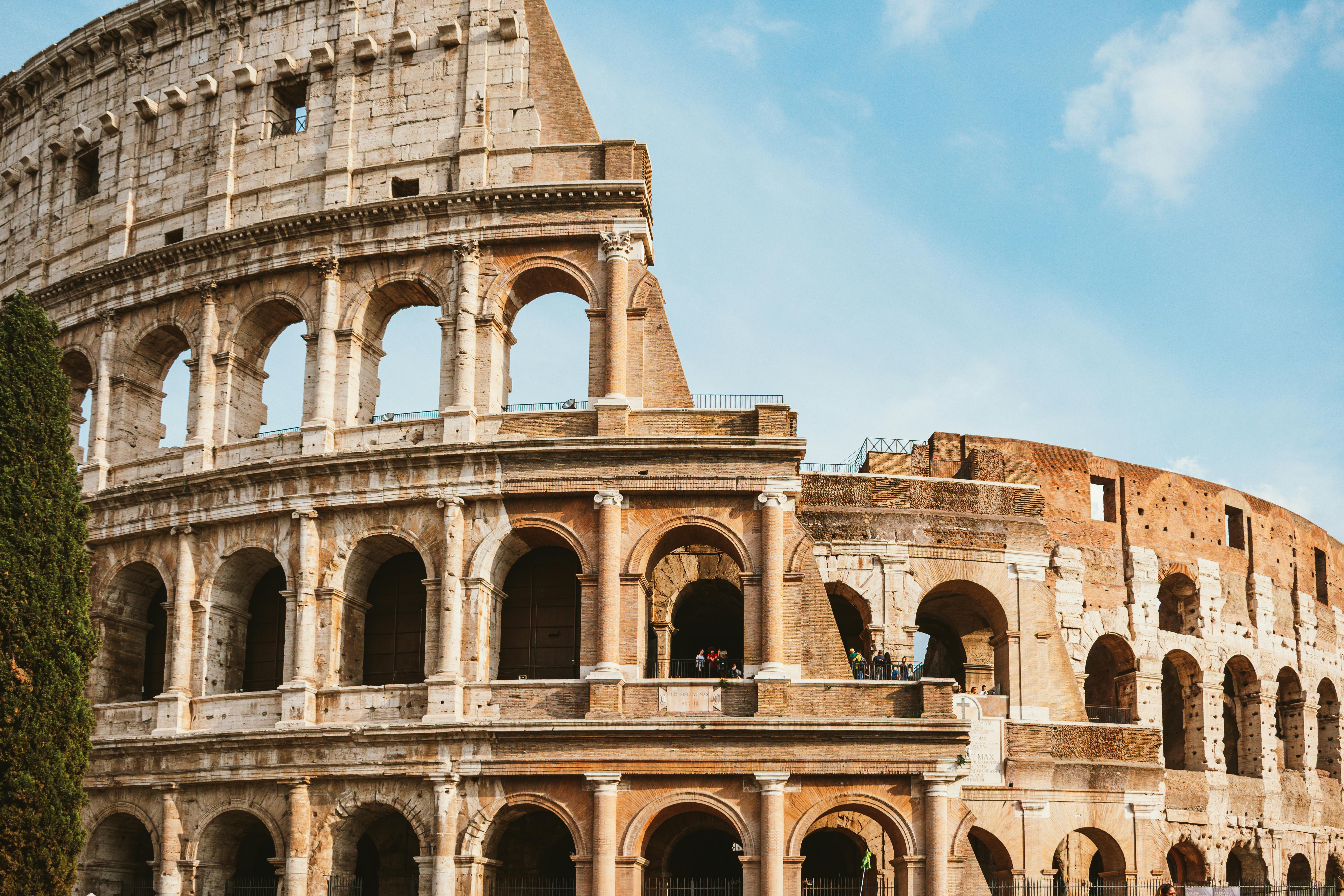
Close your eyes and imagine the sound of footsteps echoing on ancient stones.
The air is warm, tinged with espresso and history. Around you, the hum of modern Rome rises — scooters buzz, street performers play the violin, church bells ring in the distance.
But if you look closer, beneath the cobblestones, beneath the centuries, you can still feel it: the heartbeat of an empire that began with a legend.
Now, through virtual travel, you can walk these same streets, stand where emperors once stood, and trace the story of Rome from its mythic birth to the city that still commands the world’s awe.
A City Born of Myth

According to Roman mythology, Rome began with a prophecy and a riverbank. The twin brothers Romulus and Remus, sons of the god Mars and a mortal princess, were abandoned as infants and left to drift down the Tiber River. But fate had other plans — a she-wolf discovered them and nursed them to life beneath a fig tree on the slopes of Palatine Hill.
As they grew, the brothers decided to build a city where they had been saved. But their vision soon clashed — Remus mocked Romulus by jumping over the low city walls he had built, and Romulus, in a fit of rage, struck him down.
Thus, in 753 BCE, Romulus founded Rome, naming it after himself. It was a brutal beginning, but one that set the tone for a city destined to be powerful, passionate, and deeply human.
From Legend to Landscape
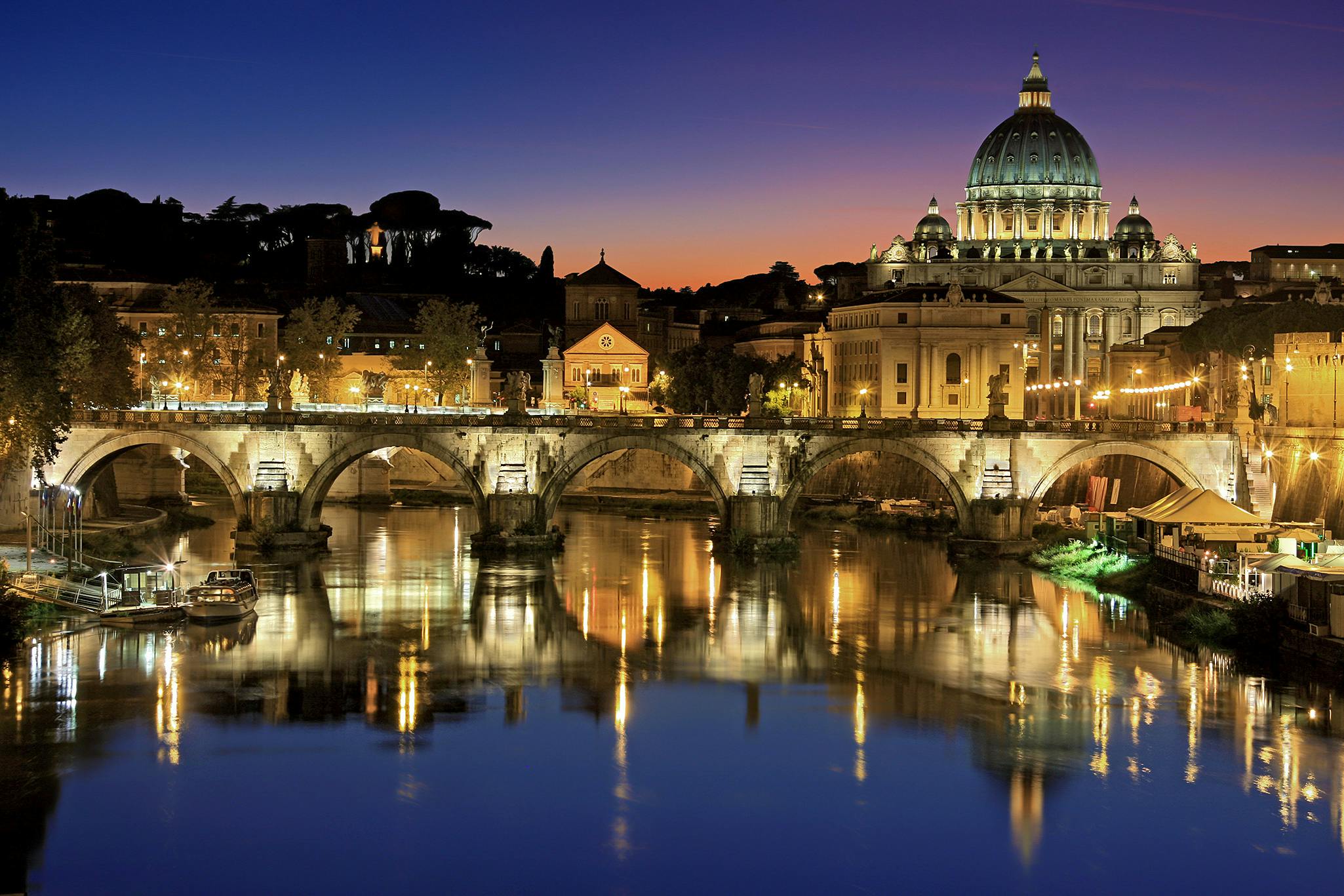
Myths aside, there were practical reasons this spot was chosen. Rome’s location was genius. Nestled among seven hills and centered around the Tiber River, it offered fertile land, fresh water, and easy trade routes. The hills provided natural defense, while the river connected the city to the Mediterranean, the future highway of the empire.
Initially, Rome was a small settlement, comprising a gathering of shepherds and farmers. But its location drew in other traders, migrants, and neighboring tribes, each adding their customs and languages to the city’s growing identity. Rome, from its very start, was a melting pot, built not just by one people but by many.
The Republic Rises — and Falls
As centuries passed, Rome transitioned from a monarchy to a republic — a groundbreaking political system in which citizens could elect their leaders. It wasn’t perfect, but it was revolutionary for its time. Names like Julius Caesar, Cincinnatus, and Cato the Elder became symbols of this experiment in shared power, ambition, and civic pride.
But ambition often breeds conflict. The Republic’s success brought wealth and with it, inequality. Power struggles between the Senate, generals, and the people boiled over. When Julius Caesar crossed the Rubicon River in 49 BCE, declaring civil war, the Republic’s days were numbered.
His assassination on the Ides of March may have been meant to restore freedom, but instead, it ushered in a new age for the Roman Empire.
The Empire of Marble
Under Augustus, Caesar’s adopted heir, Rome transformed from a city of brick to a city of marble. Temples, theaters, and bathhouses rose like jewels across the skyline. Roads stretched out like veins, connecting faraway lands — from Spain to Syria, from North Africa to Britain.
At its height, Rome was the center of the known world, a place where ideas, art, and power converged. Yet, for all its grandeur, life in the city remained deeply human — bustling markets, smoky taverns, and crowded streets filled with gossip and laughter.It was a city that lived as much as it conquered.
Fall and Rebirth — Rome’s Eternal Pattern
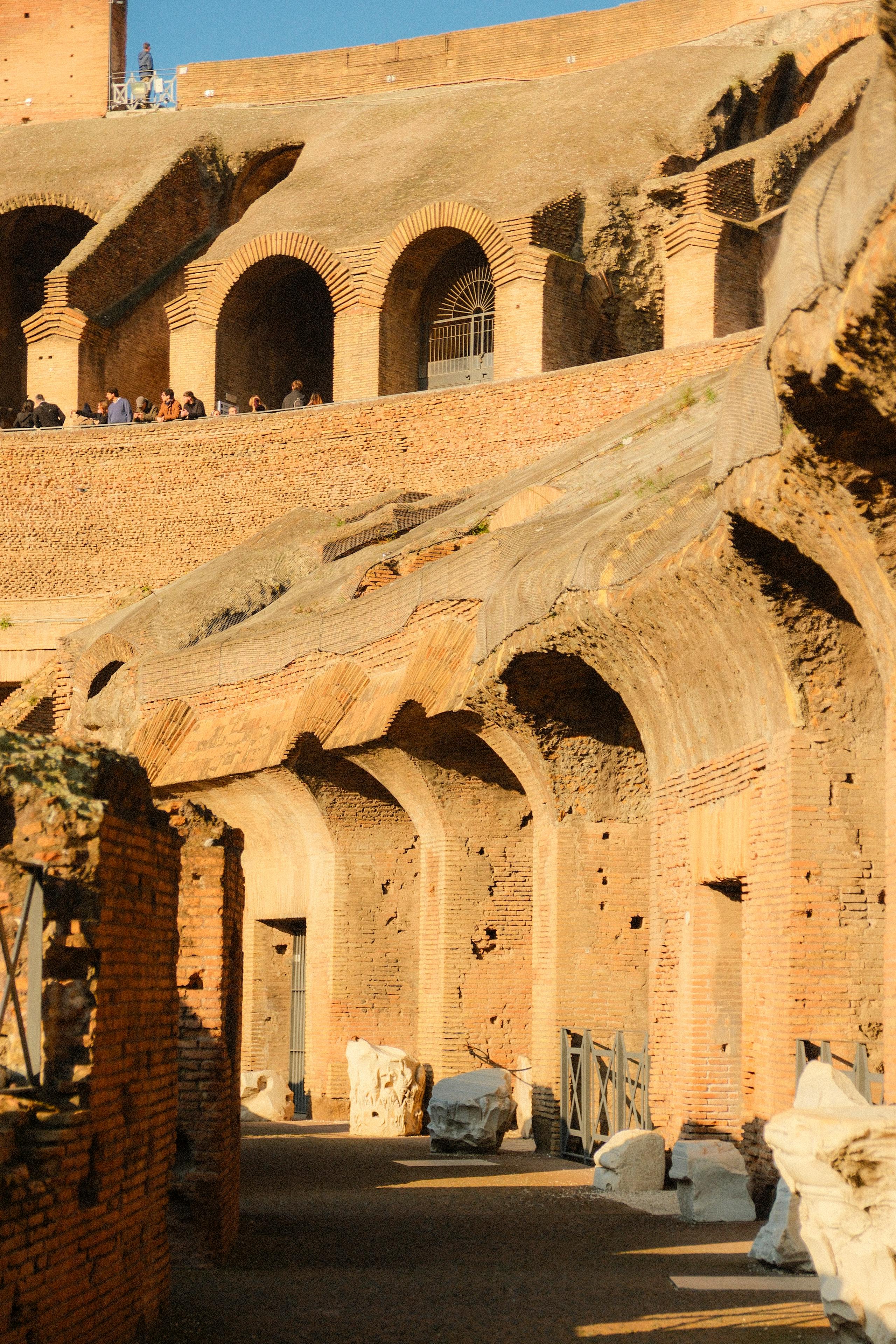
Then came a decline that was slow, almost imperceptible at first. Corruption, invasions, and division chipped away at Rome’s might. By 476 CE, the Western Roman Empire had fallen. What was once the world’s greatest city lay fractured, its marble stolen, its forums silent.
But here’s the remarkable thing about Rome: it never truly disappeared. The Catholic Church rose from its ruins, transforming the Eternal City into a spiritual capital. The Renaissance revived its art and architecture, and the Baroque era filled it again with light and grandeur.
Each age rebuilt Rome not from scratch, but atop its own history, like chapters of the same book written on the same page.
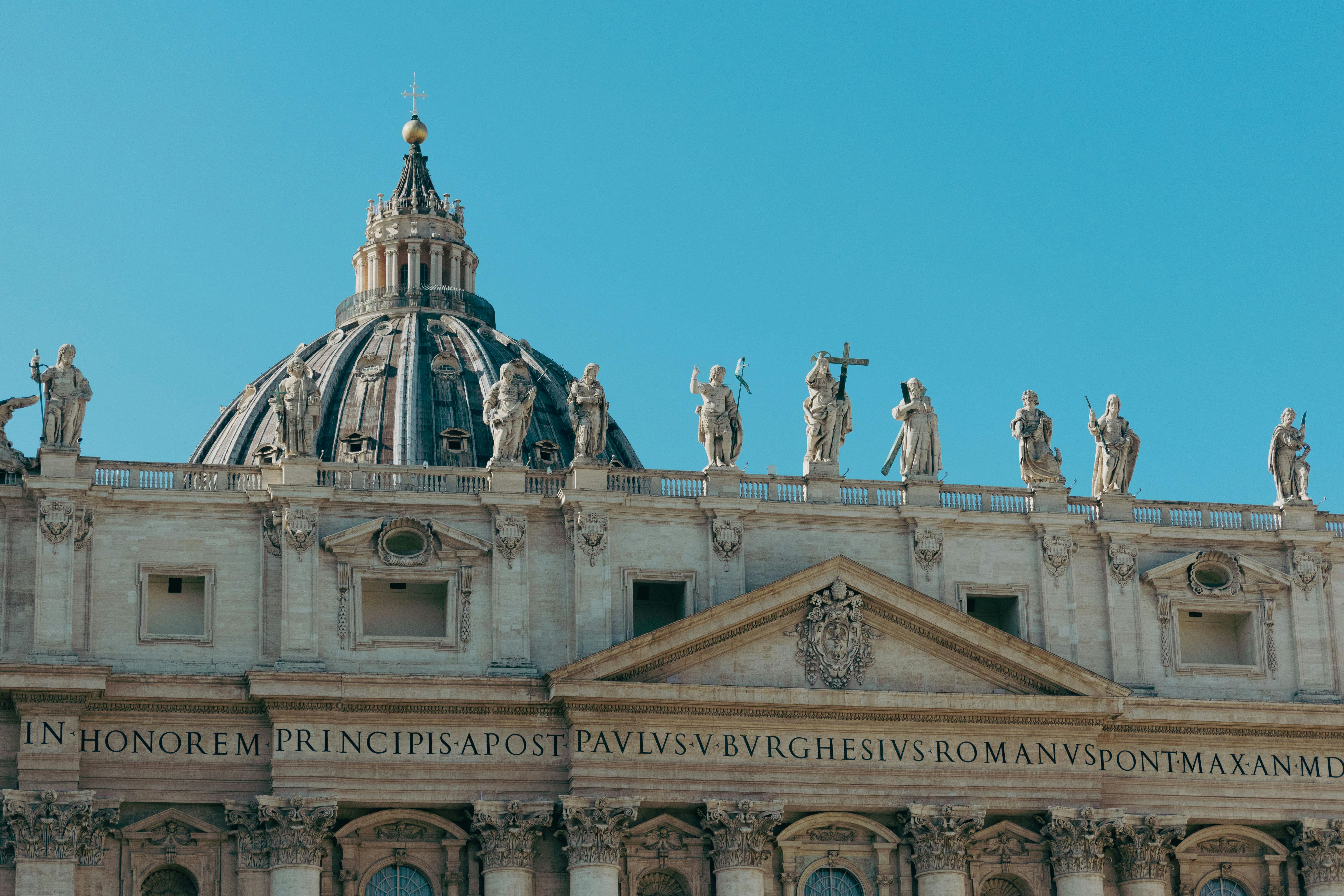
Walk through Rome today, and that history still breathes around you. You might turn a corner from a bustling piazza and suddenly face a crumbling Roman wall, or sip espresso beside columns that once framed a temple to Jupiter.
In Trastevere, laundry flaps over narrow lanes paved by emperors. In the Pantheon, sunlight pours through the oculus like a divine reminder of human craftsmanship. Every step is a dialogue between past and present — the hum of scooters mixing with the whispers of philosophers, poets, and popes.
A Walk Through Layers of Time
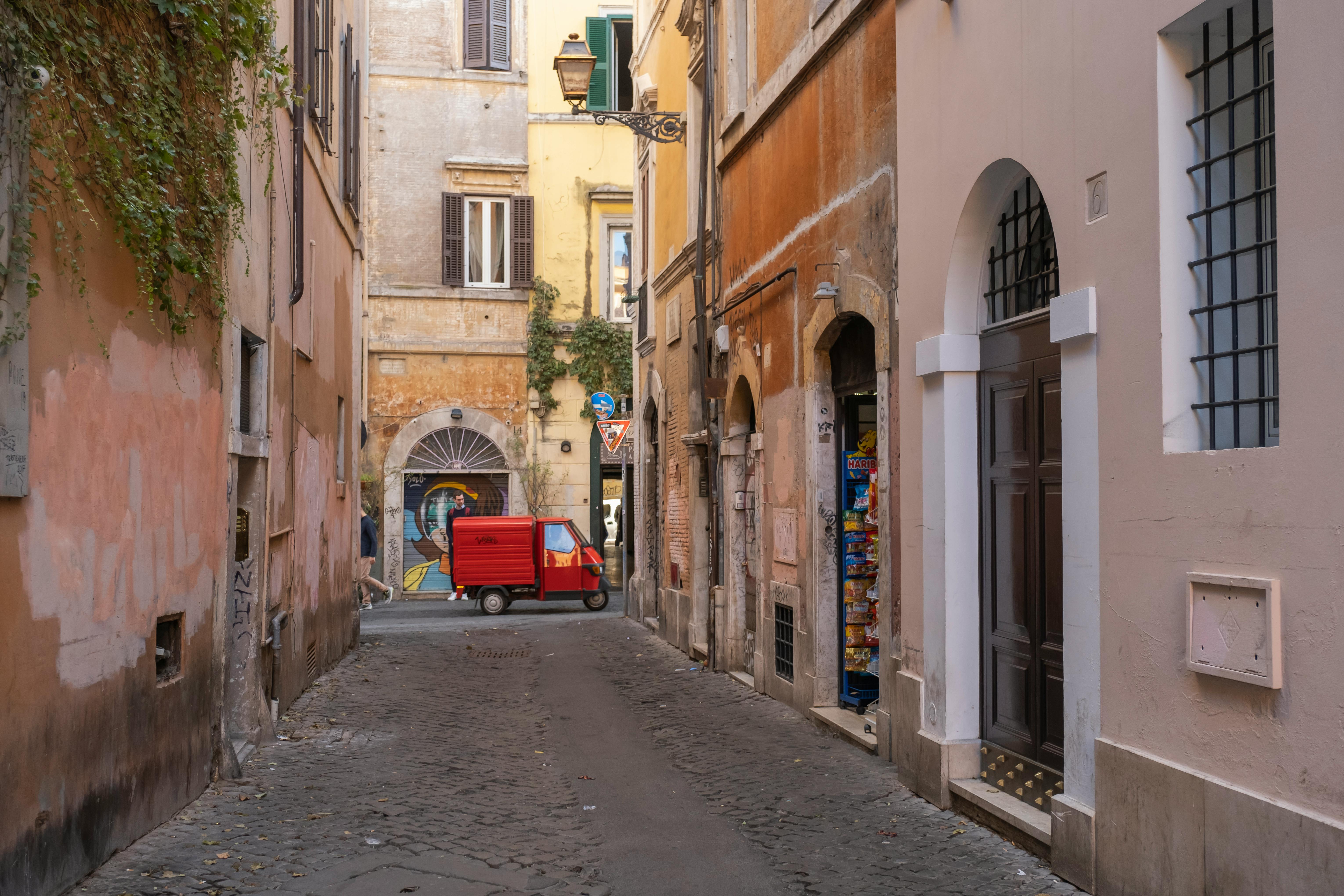
To walk through Rome, even virtually, is to walk through history’s heartbeat.
One moment, you’re standing in front of the Pantheon, watching sunlight pour through its oculus as it did two thousand years ago. Next, you’re in Trastevere, where ivy climbs the walls of Renaissance homes and laundry flaps over cobbled alleys first laid by emperors.
Every turn is a time shift. Every corner hums with the voices of gods, artists, and revolutionaries.
And now, thanks to virtual travel, you can explore it all from wherever you are:
- Stroll through the Roman Forum in a 360° virtual walk.
- Step inside St. Peter’s Basilica and look up at Michelangelo’s dome.
- Stand inside the Colosseum, where history’s echoes still linger.
- Wander Trastevere’s alleys, hearing street musicians play under golden lamplight.
To drive through Rome, click here
To walk through Rome, click here
The City That Never Stops Becoming
Rome has been a kingdom, a republic, an empire, and a rebirth again and again. Its strength lies not in perfection, but in persistence.
Even if you’re exploring it through a screen, you’ll feel that same energy that quiet hum of something ancient yet alive. The same river still flows, the same sun still hits the same stones, and the same spirit still dares to dream beyond ruin.
Because in Rome, the past isn’t over. It’s everywhere. And like the city itself, it’s eternal.

